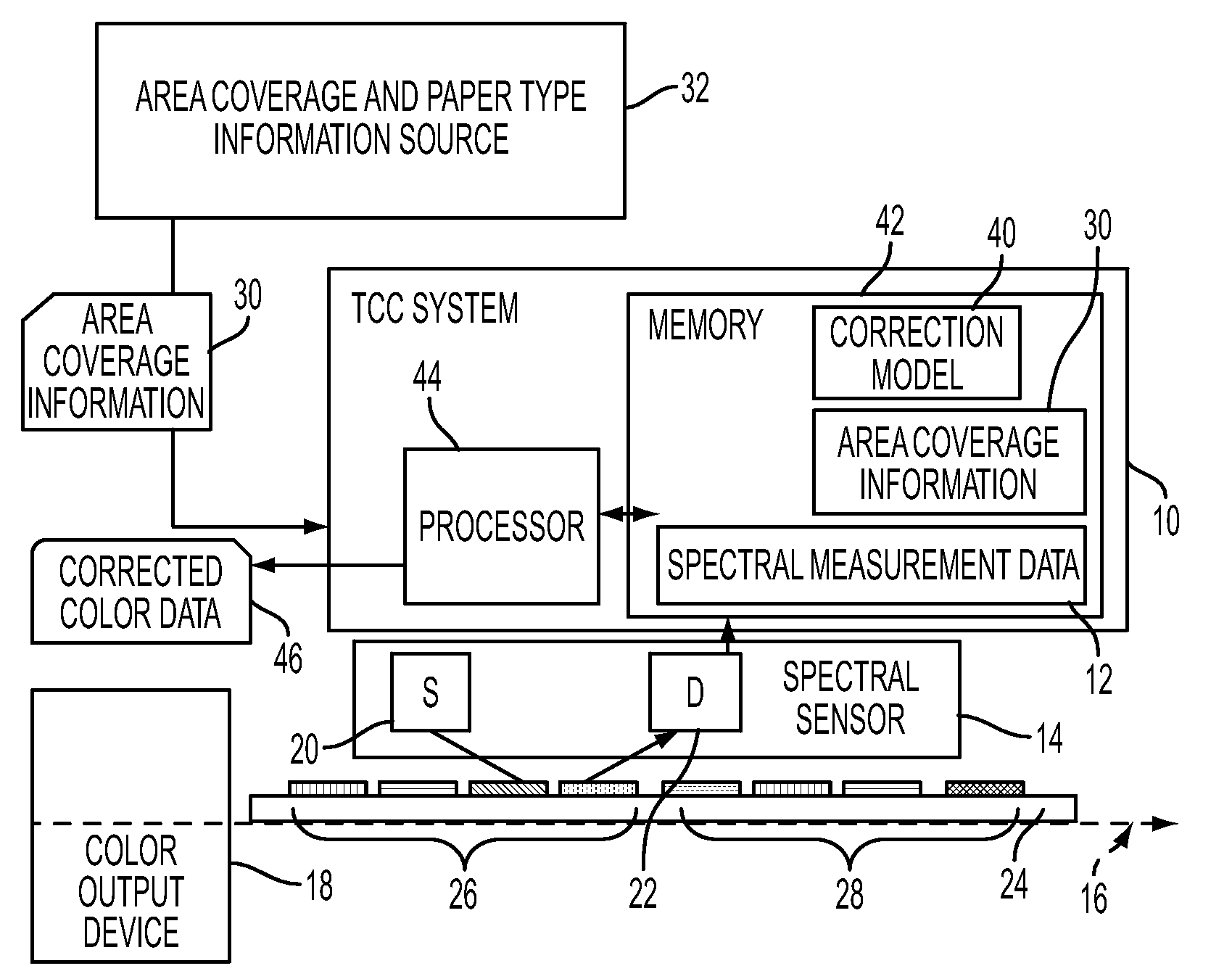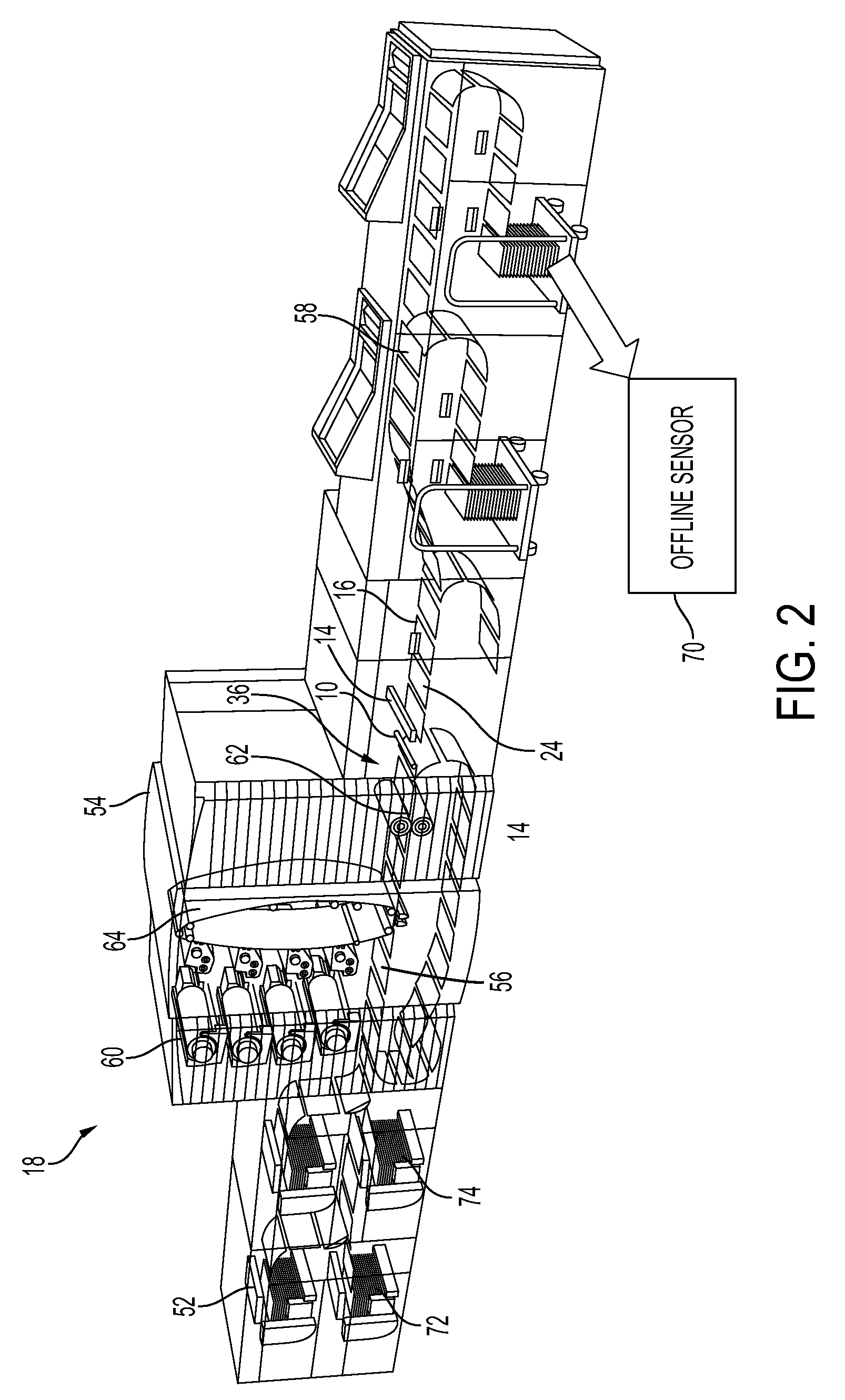Method to minimize instrument differences in color management functions
a color management and instrument technology, applied in the field of color management arts, can solve the problem that it is not likely to be cost effective to put such devices into the print path of a printing system for regular calibration purposes
- Summary
- Abstract
- Description
- Claims
- Application Information
AI Technical Summary
Benefits of technology
Problems solved by technology
Method used
Image
Examples
Embodiment Construction
[0039]Aspects of the exemplary embodiment relate to a system and method for color compensation which finds application in automated printer calibration and other color management applications. The color compensation allows a correction to be applied to measurements made with a first spectral sensor, such as an in-line spectrophotometer, so that the corrected measurements more closely emulate measurements which would be made on a second spectral sensor, such as a golden measurement standard instrument, e.g., an X-Rite iSis or X-Rite DTP70 Autoscan spectrophotometer.
[0040]The exemplary system and method allow the first spectral sensor measurements to be corrected for both differences in the way in which the two sensors perceive colors and also the differences in the conditions under which the measurements are made. Thermochromaticity correction, as used herein, implies a correction which is applied to account for thermochromatic material properties, in particular, the shift in toner c...
PUM
 Login to View More
Login to View More Abstract
Description
Claims
Application Information
 Login to View More
Login to View More - R&D
- Intellectual Property
- Life Sciences
- Materials
- Tech Scout
- Unparalleled Data Quality
- Higher Quality Content
- 60% Fewer Hallucinations
Browse by: Latest US Patents, China's latest patents, Technical Efficacy Thesaurus, Application Domain, Technology Topic, Popular Technical Reports.
© 2025 PatSnap. All rights reserved.Legal|Privacy policy|Modern Slavery Act Transparency Statement|Sitemap|About US| Contact US: help@patsnap.com



